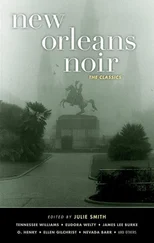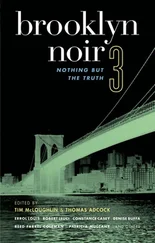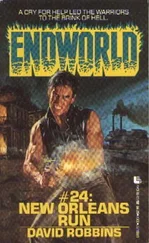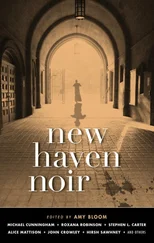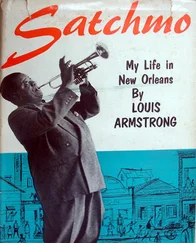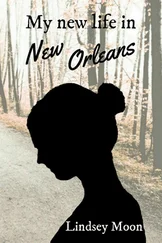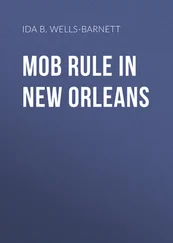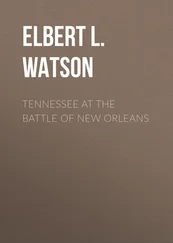For thirty years, the blue paint of the statue’s gown had faded, the brass cross at the grotto’s peak had weathered, and the garden had flourished. For all that time, the sainted Virgin — not the statue, but the mother of Jesus it represented — had remained vigilant, holding back the dangerous water of the canal and protecting the snug white house on Calais Street.
And then the Virgin failed, Sonny thought bitterly as he navigated through the foul water toward the cross that was now the only thing marking the location of the grotto. She’d failed to protect Tam from the cancer that so unexpectedly took her life. Then she’d failed to protect the house — to protect Village de l’Est and, in fact, the whole of New Orleans — from the catastrophe that was Hurricane Katrina.
If it had been up to him, the statue would have remained where it was. Failed and submerged. But Tam would have judged that a sacrilege. And with her less than six months in the grave, Sonny’s actions were most often guided by what he thought she would have wanted. That was why he’d ignored Mayor Nagin’s evacuation order and ridden out the hurricane rather than leaving their three Siamese cats to fend for themselves. And that was why he had left behind the security of his windowless second-floor attic.
Wearing the same worn T-shirt and faded khaki shorts he’d had on when he’d first retreated from the flood, Sonny had gone back downstairs. He’d already ventured into the flooded first floor several times before, intent on retrieving a few more photos, gathering a little more food, fetching a couple more blankets. So as he’d waded once again through the knee-deep water, he averted his eyes from the sight of his favorite chair soaked beyond repair, looked quickly past the darkly stained wallpaper curling away from the walls, tried not to think about the rugs beneath his feet. But he couldn’t ignore the smell — the odor of rotting food, wet paper, decomposing wood, and mildew that the stagnant water seemed to bind together.
The smell had followed him as he pushed open the water-swollen side door, then stepped onto a tiny porch. As he made his way gingerly down a trio of steps linking the porch to the driveway, a Vietnamese proverb sprang, unbidden, into his mind. He spoke it aloud before leaving the last step, tipping his head as he listened to the way the flowing syllables of his native tongue echoed off the unnatural silence beyond his kitchen door. A silence that — at least today — had been unbroken except for birdsong and the occasional racket of low-flying helicopters.
“An co di truoc. Loi nuoc theo sau .” (“When having a party, go first. When walking in the water, go after.”)
Sonny had smiled — a tired, twisted smile — as he considered the uselessness of the proverb’s wisdom. Then he went first and alone into the tepid water, using his wiry 5'2" frame to estimate its depth. About four feet, Sonny decided, knowing that he was one of the lucky ones.
Though he hadn’t anticipated the flooding, he’d been cautious enough to follow a New Orleans maxim. As Katrina made landfall, he’d taken his old shotgun — rather than an axe — with him into his attic. He hadn’t needed it. But in the hours after storm-driven water overtopped the nearby levee, he’d heard shotgun fire echoing in the distance. And he feared that in the lower-lying areas surrounding Village de l’Est, people trapped by rising water in their windowless attics were blasting holes in their roofs to escape deathtraps.
Another helicopter flew overhead, its clatter magnified as the sound bounced off the swamped houses below. It was on its way, Sonny was certain, to pluck unfortunates from their rooftops. To rescue people whose lives were endangered. But because that did not describe Sonny’s situation, it didn’t occur to him to signal for help. He didn’t need rescuing. As others had evacuated, he’d prepared. He had food and water, the company of his cats, a battery-powered radio, and a dry attic. No matter if it took a week or two or even three, Sonny knew that eventually the water would recede. Then his neighbors would return.
Ta ve ta tam ao ta. Du trong du duc ao nha van hon. That’s what generations of Vietnamese had advised each other. (“Let’s go home and bathe in our own pond. Clear or muddy, it’s the water of our pond.”)
Now that proverb, Sonny thought, was appropriate to the present situation. War and governments might have compelled the immigrants of Village de l’Est to abandon their homeland. But a big storm? An unexpected flood? Sonny shook his head. That would not keep a Viet Kieu — a Vietnamese living in the land of golden landscapes — away from home for very long. He was certain that most would return to the muddy pond that was now Village de l’Est. And they would rebuild.
In the meantime, he would wait. And rescue the statue. For Tam.
The day was hot and humid, so Sonny moved slowly through the water, conserving his energy, using his sandaled feet to feel his way along the path that led to the statue. The flagstones paralleled the driveway for a dozen feet, then rounded a corner into the front yard. From there, the path curved outward until it reached the center of the yard, then curved back until ending at the grotto. No need for American efficiency in this route, Tam had insisted as Sonny laid the stones. And then she’d filled the shallow half-moon between path and house with delicate shrubs, colorful flowers, fragrant herbs, and interesting objects.
Now all that beauty was submerged, replaced by debris and rainbow slicks of chemicals floating on the muddy water. The carefully placed objects and lush growth had become nothing more than hidden hazards. For the first time, Sonny wished the route to the grotto was more direct.
At a place where the arc of the path took it closest to the street, something caught Sonny’s ankles, sending him plunging into the water. For a heartbeat or two, he panicked, certain that he’d encountered a cottonmouth. That its curved fangs would soon plunge into his ankle, delivering its lethal poison.
Urgently, Sonny kicked himself free of the tangle, flailing his arms wildly as he scrambled back onto his feet. That was when the section of flexible drainage hose, dislodged by his movements, drifted to the surface. Still sputtering and coughing, Sonny cursed the hose, cursed his pounding heart and his irrational fear. Though he’d admitted it to few besides Tam, snakes terrified him. Especially vipers. He ran his hands over his face and his crew-cut gray hair, slicking away the worst of the water. And then he stood quietly, concentrating on his breathing as he struggled to regain his sense of calm.
Deliberately — almost defiantly — he ignored one of the customs he’d had since childhood. Though Tam would have disapproved, he did not pray to the Virgin for courage. Instead, he lifted his chin, turned his back on the grotto, and focused his attention on the ruined landscape.
Debris was everywhere. The screeching wind that had twisted signs and toppled trees had also shattered windows and torn away whole sections of houses. Power lines hung like thick, twisted vines, dangling down into the water, no longer sparking as they had when Katrina swept inland. Only the roofs of a few drowned cars made it possible to separate street from front yards.
One of those cars, Sonny saw, belonged to his neighbor on the corner.
The car was a distinctive color. Blackberry, its owner, Charlie Pham, had informed him just a week earlier. The presence of the expensive car in front of Sonny’s modest house puzzled him. No doubt the five members of the Pham family would have evacuated New Orleans in their minivan. But why, Sonny wondered, wasn’t the new Cadillac parked in the relative security of Charlie Pham’s brick garage? Sonny pondered this briefly, then shrugged, confident that there was some simple explanation.
Читать дальше

